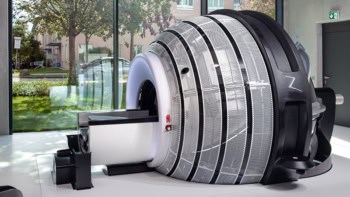
Novel oxygen-trapping materials produced using a whipping siphon can be used to improve the response of cancer cells to radiation and certain chemotherapies. The materials, which can be formulated as foams, solids or hydrogels, are designed to carry high concentrations of therapeutic gases, such as oxygen, that can then be injected directly into tumour tissue, according to the researchers who developed them.
The researchers, led by James Byrne and Jianling Bi of the University of Iowa made the gas-entrapping materials (GeMs) using pressurized vessels: a whipping siphon and a Parr reactor (a stirring high-pressure reactor). The whipping siphon, which is better known for creating foams on hot chocolate or cappuccinos, generates materials that entrap gas at standard pressures, whereas the Parr reactor created solids that can trap gases at pressures as high as 600 PSI (3.45 MPa). The Parr method physically entraps pressurized oxygen in a natural polymer matrix, a process that’s used to make some types of fizzy sweets.
The GeMs are composed of xanthan gum and sodium alginate, which are commonly used as inactive ingredients in manufacturing pharmaceuticals and therefore generally regarded as safe by the US Food and Drug Administration.
GeMs foams can be injected into tumour tissue
“We are able to directly inject the foam GeMs into tumour tissue using a syringe,” explains Byrne. “The solid GeMs can be created in clinically deliverable forms, similar to brachytherapy implants or fiducials for radiographic image-guidance, and then implanted into tumours using a needle.”
Byrne says that these materials can improve the effectiveness of standard chemotherapy and radiation treatments, by increasing the amount of oxygen, for example, within solid tumours. “Most tumours have very low oxygen levels, which is called hypoxia,” he explains. “Decades ago, researchers were able to show that if you increase the amount of oxygen in cancer cells, you can improve their response to radiation and certain chemotherapies.”
The team demonstrated that the materials could deliver extremely high amounts of oxygen locally into two types of tumours in mice, improving the effectiveness of standard treatments. “This is very relevant to clinical situations in which certain cancers poorly respond to radiotherapy and chemotherapy, or for a tumour that will be removed surgically,” says Byrne.
The increased oxygen levels also appear to improve the immunogenic tumour environment in malignant peripheral nerve sheath tumours, the researchers found. Such tumours, so-called because they wrap around peripheral nerves, are difficult to remove surgically because doing so can damage the nerve, resulting in paralysis, severe illness or even death. Improving the immunogenic tumour environment means that the body’s immune system better recognizes the tumour, explains Byrne, which helps improve the effectiveness of immunotherapies, possibly enabling treatment of metastatic disease.
Further treatments may be required
“The main applications for these materials will be to treat hypoxic tumours in combination with other therapies,” Byrne tells Physics World. “They also provide an opportunity to trial other gases and drugs to improve cancer therapy.”

Microbubbles offer two-in-one cancer treatment
Byrne emphasizes that this work was a large team effort spanning multiple institutions, including the University of Iowa, Massachusetts Institute of Technology, Brigham and Women’s Hospital, Beth Israel Deaconess Medical Center and Harvard Medical School. “The completion of this project would not have been possible without the efforts of many individuals,” he adds.
The researchers now plan to investigate whether the GeMs need to be administered continually to reduce the size of a tumour. “The fact that tumour growth is slowed rather than completely arrested in the techniques we tested also suggests that further treatments may be required,” they explain. “Such treatments could include using different types of pressurized vessels and higher pressures to improve the amount of gas delivered into a tumour.”
The work is detailed in Advanced Science.



